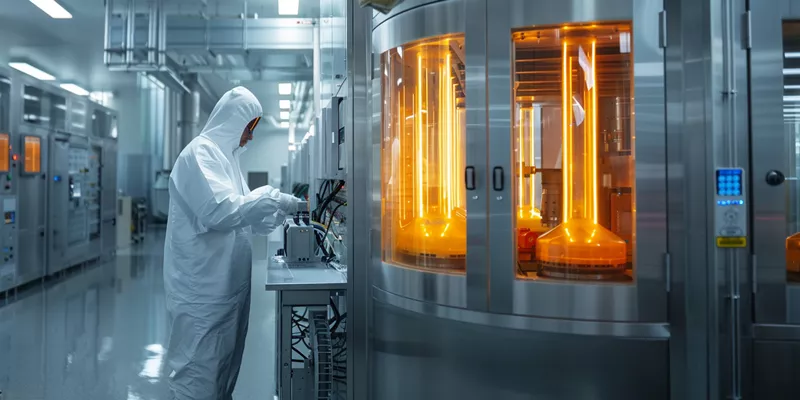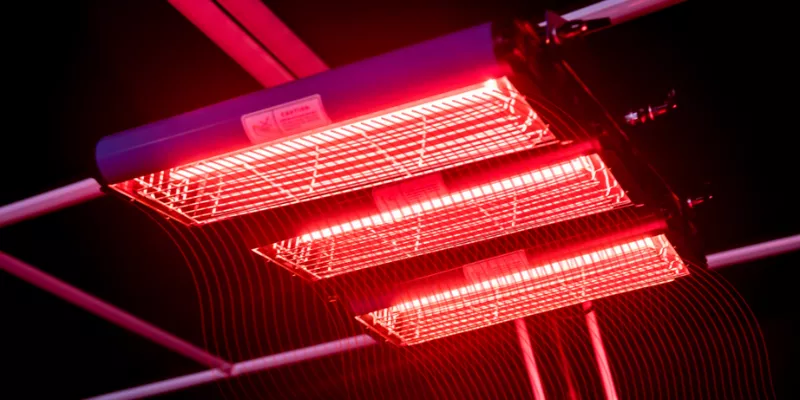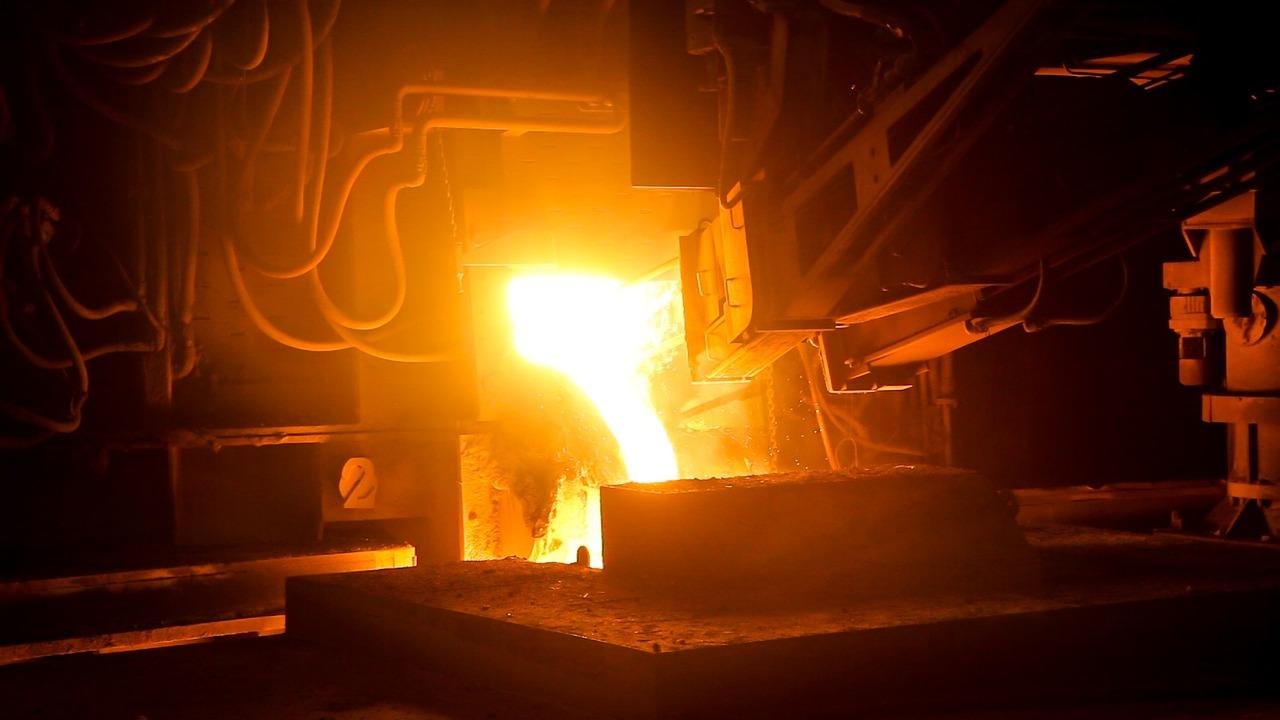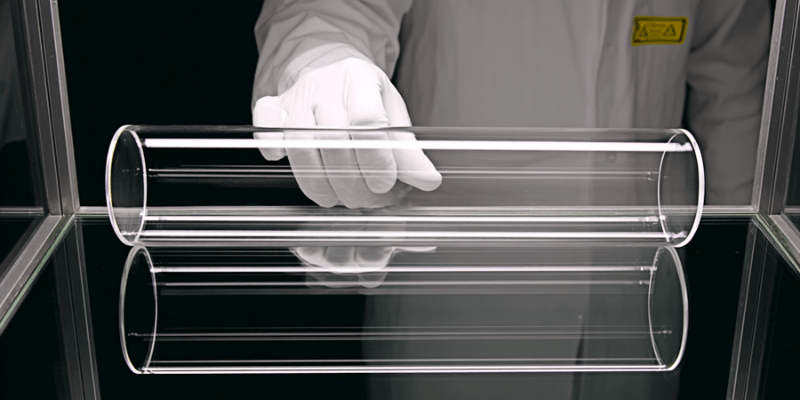In laboratories, the choice of materials plays a crucial role in determining the quality and accuracy of experimental results. Among the various options, Quartz Petri Dishes stand out as the optimal solution for high-temperature and chemically challenging environments. Their unique properties ensure that they can withstand extreme conditions, providing a reliable surface for a range of scientific experiments.
Quartz Petri Dishes are the ideal choice for laboratories requiring high resistance to heat and chemical reactions. Their superior thermal stability, chemical inertness, and non-reactivity make them perfect for a wide variety of applications.

What Makes Quartz Petri Dishes Suitable for High-Temperature Laboratory Applications?
Known for their ability to withstand extremely high temperatures, Quartz Petri Dishes are indispensable in laboratory settings. In environments where precision and reliability are critical, they offer the durability needed for consistent results.
Thermal Stability and Resistance to Thermal Shock: How Quartz Dishes Perform Under Extreme Temperatures
Quartz Petri Dishes are well-known for their exceptional thermal stability, which allows them to perform consistently in high-temperature environments. They are able to withstand rapid temperature fluctuations, which is crucial in laboratories where experiments often require varying conditions. Their resistance to thermal shock ensures that they will not crack or degrade when exposed to sudden changes in temperature. This durability is what makes Quartz Petri Dishes the preferred choice for experiments that involve heating and cooling cycles.
The material properties of Quartz, particularly its low coefficient of thermal expansion, help it maintain structural integrity even under extreme temperature stresses. When exposed to high heat, Quartz remains stable, unlike glass or plastic, which may warp or shatter. The ability of Quartz to retain its form under these conditions contributes to the reliability of the experiment and the accuracy of the results. This makes Quartz an ideal material for laboratories working with high-temperature applications.
In comparison to other materials, Quartz offers superior thermal shock resistance, making it an essential component in experiments where heat stability is critical. For instance, in chemical reactions requiring rapid heating and cooling, Quartz Petri Dishes can endure thermal stresses without compromising their performance. This feature not only enhances the safety of the laboratory environment but also ensures that the materials inside the dish remain unaffected by temperature fluctuations.
Temperature Range and Performance in Extreme Conditions: Defining the High-Temperature Thresholds
Quartz Petri Dishes have a temperature threshold that allows them to endure continuous use at temperatures up to 1,200°C. This makes them ideal for high-temperature applications in laboratory environments, where precision and performance are essential. Their ability to function at such high temperatures without losing their structural integrity or compromising the quality of the experiment makes Quartz Petri Dishes a reliable choice for high-heat applications.
In addition to their high-temperature resistance, Quartz Petri Dishes also perform well under varying thermal conditions. Whether exposed to gradual or sudden temperature changes, they maintain their form and continue to offer stable surfaces for experiments. This adaptability is particularly important in laboratories where temperature conditions fluctuate during testing. The broad temperature range of Quartz makes it a versatile material for many scientific experiments.
When compared to other materials, Quartz stands out due to its ability to withstand extreme temperatures without significant performance degradation. While materials like glass may start to crack or lose their functionality at high temperatures, Quartz remains stable and effective. This durability ensures that experiments involving extreme heat can be carried out with confidence, resulting in more accurate and reliable outcomes.
How Do Quartz Petri Dishes Ensure Chemical Stability and Non-Reactivity in Laboratories?
Chemical stability and non-reactivity are essential characteristics for materials used in laboratory experiments. Quartz Petri Dishes offer superior performance in these areas, ensuring that experiments remain uncontaminated and results are accurate.
Resistance to Acids, Bases, and Solvents: How Quartz Performs in Aggressive Chemical Environments
Quartz Petri Dishes are highly resistant to most acids, bases, and solvents, which makes them ideal for use in chemically aggressive environments. Unlike plastic or glass, which can react with certain chemicals, Quartz remains inert and unaffected by most substances. This resistance ensures that no unwanted reactions will take place between the Petri Dish and the chemicals, preserving the purity of the experiment.
The exceptional chemical resistance of Quartz allows it to be used in a wide range of chemical experiments, including those that involve strong acids and bases. For example, in laboratories where chemical reactions may involve corrosive reagents, Quartz provides a safe and reliable surface that will not degrade over time. This resistance ensures that experiments will be conducted with accurate results and minimal risk of contamination.
In addition to its resistance to common acids and bases, Quartz is also impervious to many solvents, making it a versatile choice for a variety of scientific applications. For instance, when conducting experiments with organic solvents, Quartz Petri Dishes provide a stable, uncontaminated surface. This makes them particularly valuable in research where precise chemical conditions must be maintained throughout the course of the experiment.
Non-Reactive Surface for Sensitive Experiments: Preventing Contamination in Sensitive Chemical Reactions
Quartz Petri Dishes feature a non-reactive surface that minimizes the risk of contamination, which is crucial in sensitive chemical reactions. The smooth, inert surface of Quartz ensures that no unwanted chemical interactions will take place, preserving the integrity of the samples. This non-reactivity is especially important in experiments that require absolute purity, such as those involving delicate or rare substances.
The non-reactive nature of Quartz also helps maintain a stable environment for chemical reactions. By preventing the introduction of contaminants, Quartz ensures that the results of the experiment are not altered by interactions with the dish. This makes Quartz an essential material for laboratories where maintaining a clean, uncontaminated environment is paramount for accurate experimental outcomes.
For laboratories that focus on highly sensitive chemical reactions, using Quartz Petri Dishes is a vital step in ensuring that results are reliable. The inert properties of Quartz make it the preferred choice over other materials like glass or plastic, which may leach impurities or degrade under certain conditions. By using Quartz, researchers can maintain the purity of their samples and ensure that their results reflect the true nature of the chemical reactions being studied.
Role of Quartz in Preventing Contamination in Chemical Reactions: Maintaining Purity in Experiments
Quartz Petri Dishes play a crucial role in preventing contamination during chemical reactions, which is vital for maintaining the purity of experimental results. The material’s inert nature means that it does not react with most chemicals, ensuring that no unwanted substances are introduced into the reaction. This is particularly important in experiments where even the smallest amount of contamination could alter the outcome, leading to inaccurate data or results.
Because Quartz is chemically stable and resistant to corrosion, it serves as a perfect vessel for chemical reactions. Unlike materials such as plastic or glass, which can interact with certain chemicals and potentially leach impurities, Quartz remains unaffected by most solvents, acids, and bases. This non-reactive surface keeps the chemicals within the Petri Dish pure, ensuring that the reaction proceeds as intended without external interference.
Furthermore, the use of Quartz ensures that the integrity of the chemical reaction is preserved from start to finish. This is particularly critical in high-precision chemical synthesis or sensitive chemical analyses where the purity of the substances involved is essential. By preventing contamination, Quartz not only improves the accuracy of the experiment but also contributes to the reliability of the final results, making it an essential material for laboratories focused on achieving pure and uncontaminated experimental conditions.
How Do Quartz Petri Dishes Contribute to High-Precision Chemical Reactions?
Quartz Petri Dishes play an essential role in ensuring that chemical reactions are conducted under optimal conditions. Their unique properties contribute to the precision and reliability required for high-level scientific experiments.
Uniform Heating for Controlled Reactions: How Quartz Ensures Even Heat Distribution
Quartz Petri Dishes provide a uniform heating surface, ensuring that chemical reactions occur under controlled conditions. The material's excellent heat conductivity allows it to distribute heat evenly across the entire surface, preventing hot spots that could affect the outcome of the experiment. This uniformity is particularly important in experiments that require precise temperature control for optimal results.
The even distribution of heat also ensures that the substances within the dish are exposed to consistent temperatures throughout the reaction. This is crucial for reactions that require specific thermal conditions to proceed correctly. By maintaining an even temperature, Quartz Petri Dishes help create a stable environment, contributing to more accurate and reproducible experimental results.
In contrast to other materials, Quartz offers superior heat distribution, which is essential for high-precision chemical reactions. Materials like glass may not distribute heat as evenly, leading to temperature inconsistencies that could skew results. Quartz Petri Dishes, however, ensure that the temperature remains consistent across the dish, making them the optimal choice for experiments that require tight thermal control.
Minimizing Contamination Risks in Chemical Synthesis: The Role of Non-Reactivity in Reaction Purity
Quartz Petri Dishes are vital in minimizing contamination risks during chemical synthesis due to their non-reactive properties. The surface of Quartz does not react with most chemicals, ensuring that the synthesis process remains uncontaminated. This is crucial for chemical reactions where the purity of the product is of utmost importance, and even small amounts of contamination can alter the final result.
By preventing reactions between the dish and the chemicals, Quartz Petri Dishes allow for cleaner, more accurate results. The inert surface of Quartz ensures that no unwanted by-products are formed, which can often occur with less stable materials. This non-reactivity is particularly important in the synthesis of complex compounds, where even the smallest deviation can lead to failure or inaccurate data.
The risk of contamination is one of the most significant challenges in chemical synthesis, but Quartz Petri Dishes effectively address this issue. Their ability to maintain a pure environment for the chemical reaction ensures that the final product is not tainted by impurities. As a result, Quartz Petri Dishes help maintain the integrity of the synthesis process, leading to higher-quality and more reliable results.
Enhancing the Accuracy of Laboratory Experiment Results: Using Quartz Petri Dishes to Achieve Precise Results
Quartz Petri Dishes contribute to the accuracy of laboratory experiment results by providing a stable and consistent environment. Their resistance to heat and chemical reactions ensures that the conditions of the experiment remain unchanged, preventing external factors from influencing the outcome. This makes Quartz Petri Dishes an ideal choice for high-precision experiments that require reliable results.
In addition to their stability, Quartz Petri Dishes maintain their integrity throughout the experiment, even under challenging conditions. This consistency is crucial when conducting experiments that require precise measurements and conditions. With Quartz, researchers can trust that their results are not skewed by the material, leading to more accurate conclusions.
Quartz Petri Dishes are especially valuable in experiments where even minor deviations can have significant impacts on the results. By ensuring that the experiment is conducted under optimal conditions, Quartz helps researchers achieve high accuracy in their findings. This contributes to the overall reliability of laboratory experiments, particularly those in high-precision fields like chemistry and biology.
How Quartz Petri Dishes Optimize Cell Culture and Biological Experiments in Laboratories
Quartz Petri Dishes offer significant advantages in biological applications, particularly in cell culture experiments. Their unique properties promote optimal cell growth and minimize contamination, ensuring that biological experiments are carried out under ideal conditions.
Surface Characteristics for Optimal Cell Attachment: How Quartz Petri Dishes Support Efficient Cell Growth
Quartz Petri Dishes provide an ideal surface for cell attachment, which is essential for cell growth and biological experiments. The smooth, inert surface of Quartz allows cells to adhere effectively, creating a stable environment for cellular processes. This is particularly important in cell culture experiments, where the condition of the Petri dish directly impacts the health and growth of the cells.
The unique surface characteristics of Quartz promote efficient cell growth by providing a non-reactive, stable environment. Unlike plastic or glass, which may release substances that interfere with cell behavior, Quartz remains chemically inert, ensuring that the cells grow as expected. This helps researchers maintain accurate and reproducible results in cell culture experiments.
Quartz Petri Dishes are preferred in laboratories focused on cell biology because they create a consistent environment for cell growth. Their surface properties support cell adhesion without causing any adverse effects, making them an essential tool for long-term cell cultures. By using Quartz, researchers can ensure that the cells remain healthy and proliferate efficiently.
Ensuring Minimal Contamination During Cell Growth: How Quartz Petri Dishes Prevent Interference in Cell Culture Environments
Quartz Petri Dishes prevent contamination in cell culture environments by maintaining a chemically inert surface. Unlike other materials, Quartz does not interact with the substances in the culture medium, ensuring that the environment remains uncontaminated. This is crucial in experiments where even the slightest contamination could affect the growth and behavior of the cells.
The resistance of Quartz to chemical reactions means that it will not release harmful substances into the culture medium. This helps to maintain the integrity of the cell culture, reducing the risk of contamination and ensuring that the cells grow under optimal conditions. The non-reactive surface of Quartz also minimizes the potential for cellular interference, ensuring accurate experimental results.
By using Quartz Petri Dishes, researchers can maintain a clean and stable environment for their cell cultures. This ensures that the cells grow in an environment that is free from unwanted chemicals or contaminants, which is essential for obtaining reliable and reproducible results. Quartz helps prevent contamination that could otherwise alter the behavior and outcomes of the experiment.
Advantages of Quartz Petri Dishes Over Plastic and Glass in Cell Cultures: How Quartz Enhances Long-Term Cell Cultures
Quartz Petri Dishes offer significant advantages over plastic and glass alternatives when it comes to long-term cell cultures. Their superior chemical resistance ensures that they do not degrade or release harmful substances that could affect cell growth. This makes Quartz a better choice for extended cell culture experiments, where the integrity of the culture needs to be maintained over time.
The durability of Quartz also contributes to its effectiveness in long-term cell culture experiments. Unlike plastic dishes, which may become brittle or deform over time, Quartz Petri Dishes remain stable and functional for extended periods. This ensures that the cells are continuously exposed to the same optimal conditions, leading to more reliable results in long-term studies.
Quartz Petri Dishes are ideal for laboratories that require consistent and reliable conditions for cell cultures. Their non-reactive properties ensure that the cells are not exposed to external factors that could influence their behavior. This makes Quartz Petri Dishes the preferred choice for researchers working with long-term cell cultures that require stability and precision.
When Should Laboratories Prefer Quartz Petri Dishes Over Other Alternatives?
Choosing the right Petri dish material is crucial for achieving reliable experimental results. Quartz Petri Dishes are a superior choice for certain laboratory applications, particularly when high precision and resistance to extreme conditions are required.
Identifying the Right Laboratory Use Cases for Quartz Petri Dishes: Which Labs Benefit Most from Quartz?
Quartz Petri Dishes are ideal for laboratories that focus on high-precision experiments requiring heat resistance, chemical stability, and non-reactivity. They are particularly beneficial in fields like chemistry, biology, and materials science, where experiments often involve extreme conditions. By providing a stable, contamination-free environment, Quartz ensures that experiments are conducted under optimal conditions.
The versatility of Quartz Petri Dishes makes them suitable for a wide range of applications, from cell culture1 to chemical reactions. Laboratories that work with harsh chemicals or high temperatures can rely on Quartz to maintain the integrity of their experiments. This makes Quartz an essential material for labs requiring high-performance solutions for complex experiments.
Labs working with sensitive compounds or delicate biological processes will benefit the most from Quartz Petri Dishes. Their ability to withstand extreme temperatures and resist chemical interactions ensures that experiments can be conducted with confidence. Researchers in these labs can trust Quartz to provide the stability needed for accurate and reliable results.
Cost vs. Performance Considerations in Petri Dish Selection: Analyzing the Value of Quartz in High-Precision Labs
While Quartz Petri Dishes may be more expensive than alternatives, their superior performance justifies the investment in high-precision laboratory settings. Their resistance to high temperatures and chemicals ensures that they can withstand harsh conditions without degrading over time. This longevity and durability make Quartz a cost-effective option in the long run, especially for labs that require consistent results from their experiments.
The upfront cost of Quartz Petri Dishes is often offset by their ability to perform under extreme conditions, where cheaper materials would fail. Laboratories that prioritize accuracy and reliability will find that the added cost of Quartz is well worth the investment. For high-precision experiments, the performance benefits of Quartz far outweigh the initial cost.
In terms of cost-effectiveness, Quartz Petri Dishes provide a higher return on investment compared to glass or plastic alternatives. Their durability and resistance to extreme conditions reduce the need for frequent replacements. This makes them a practical choice for labs that require reliable performance over extended periods of use.
Understanding the Trade-Offs Between Quartz and Other Materials: Evaluating the Best Material for Each Use Case
When selecting the appropriate material for Petri Dishes, it's essential to weigh the trade-offs between Quartz and other materials like glass or plastic. Quartz offers unparalleled resistance to high temperatures and chemicals, making it ideal for specific laboratory applications. However, it is often more expensive than alternatives, which can be a consideration for labs with budget constraints.
Glass and plastic dishes are more affordable but do not offer the same level of durability and performance as Quartz. Glass may crack under high temperatures, and plastic may degrade when exposed to chemicals. Quartz, while more expensive, ensures that experiments conducted under extreme conditions remain accurate and uncontaminated, justifying the higher cost.
The key to choosing the best material lies in understanding the specific requirements of each experiment. Labs that require high thermal stability, chemical resistance, and non-reactivity will benefit most from Quartz Petri Dishes. However, for less demanding experiments, glass or plastic alternatives may be sufficient. The decision should be based on the conditions under which the Petri Dish will be used and the importance of maintaining optimal experimental conditions.
Conclusion
Quartz Petri Dishes offer a superior solution for laboratories requiring high precision, chemical stability, and resistance to extreme conditions. Their unique properties make them the optimal choice for a variety of high-temperature and chemically challenging experiments.
Leverage the expertise of TOQUARTZ’s engineering team, backed by 20+ years of manufacturing experience, to ensure your laboratory experiments achieve the highest level of precision and reliability. Contact us today for a personalized consultation.
FAQ (Frequently Asked Questions)
What is the temperature tolerance of Quartz Petri Dishes?
Quartz Petri Dishes can withstand extremely high temperatures, typically up to 1,100°C. Their high thermal stability ensures they perform reliably under extreme heat, making them ideal for high-temperature experiments. This ability to resist thermal shock also contributes to their durability in laboratory conditions.How do Quartz Petri Dishes compare to other materials like glass or plastic?
Quartz Petri Dishes offer superior chemical resistance compared to glass and plastic, making them ideal for aggressive chemical environments. Unlike plastic, they do not leach contaminants into the substances being studied. Quartz also provides better thermal stability, making it suitable for high-precision experiments.Can Quartz Petri Dishes be used for biological experiments?
Yes, Quartz Petri Dishes are widely used for biological experiments due to their non-reactive surface. This prevents contamination and ensures that cell cultures or other biological samples remain pure. The high-quality surface also allows for better cell attachment and growth, especially in long-term cultures.Are Quartz Petri Dishes cost-effective for laboratories?
Although Quartz Petri Dishes tend to have a higher upfront cost, their durability and performance make them a cost-effective choice in the long run. They reduce the risk of contamination and improve the reliability of experimental results. Their long lifespan and resistance to wear and tear provide significant value over time.
References:
Explore the process of growing cells under controlled conditions outside their natural environment, focusing on techniques, types of cell cultures, and applications in research and medicine. ↩





